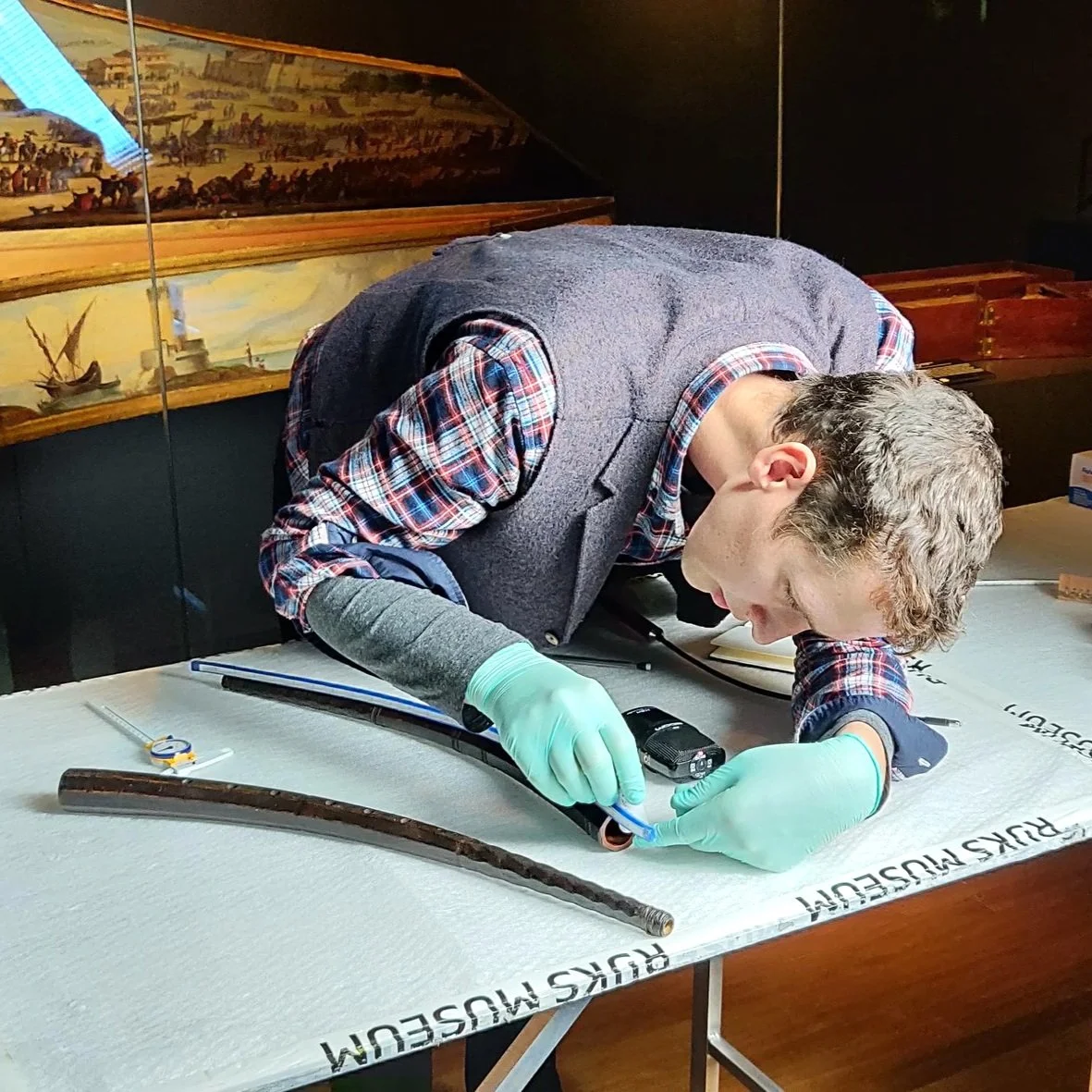Ars longa, vitae brevis…
The ancient greek aphorism written by Hippocrates of Kos says it all. Especially in its full and original translation:
“Life is short,
and art long,
opportunity fleeting,
experimentations perilous,
and judgment difficult.”
But how this rather pessimistic quote relates to a renaissance wind instrument and its making?
Cornetts are generally known as very difficult to master and rather few experienced how confusing can be to make one or evaluate a historical instrument, make its copy, and design a new model. We believe that 16th-century masters of cornett-making were knowing well what they were doing and we learn from them, trying to carry on with their effort.
The aphorism is also symbolic of dialectic duality between historical and modern, which is particularly distinguished in the case of cornett because of its hiatus in the history of musical practice. It’s most likely that 16th-century instrument makers developed the instrument with a method of trial and error drawing inspiration from mathematics, and geometry including such phenomena as the Golden ratio. Nowadays we are backed with high-precision technologies for measuring and producing instruments such as CT scanners, CNC, acoustical spectrograms, and various other tools that weren’t even dreamed about four hundred years ago. On the other hand, also old ways of making became in fact very challenging to reproduce because one wouldn’t find the necessary tools and materials on the market. Thus also the practice of cornett-making (and playing) has naturally changed, or maybe better to say – transformed.
“Nothing is lost, nothing is created, everything is transformed.”
Antonie Lavoisier (1743 – 1794)
Traité élémentaire de chimie, 1789
Besides the obvious connection of longa and brevis with music and mensural notation, the name is also symbolic of my tool friend Andrew who has been around in the cornett world much longer, and rather short myself…
-

Andrew Hallock
The long one
Andrew studied composition at the University of Texas and voice the Koninklijk Conservatorium Den Haag. His interest in the cornetto blossomed out a wider exploration of historical craft and reflection from within an ever-changing early music world. As a singer, cornettist and teacher and independent researcher, Andrew tries to champion open dialog, and a fearless exchange of ideas between thinkers and doers.
-

Patrik Sabo
The short one
Patrik studied musicology at Comenius University in Bratislava, where one of his focuses was historical organology and tracking down the history of cornetto in Slovakia. After nearly a decade of cornett playing experience, he started with cornett-making in 2021, supported by knowledge from his colleague Andrew.
The medium size story of the long & short one…
Hello my name is Patrik and my journey with cornetts began in music history classes at Comenius University in Bratislava where I was studying musicology. Funny enough, I wasn’t really impressed by it as cornett's “non-knowers” usually are. However, by that time I felt a peculiar need to start with some historical wind instrument, which I discussed with my teacher. She not only suggested choosing cornett, but she also wanted to give it a go. Even though our country has records of cornett players reaching back to mid 16th century, we likely became one of the first aspiring cornett players in Slovakia's modern history.
Sometime later in January 2015, I met Andrew at the exhibition in Vienna, where he was presenting his instruments and I was seeking advice on my cornett-related thesis. This meeting sparked a great friendship, a lot of geeky debates, and a series of mutual visits. The first one of them became a particular inspiration when I experienced Andrews's workshop, which he had right under his apartment together with his friend Soren, who's a maker of historical clarinets. The creative drive of the place still resonates with me to this day. It also marks my first experience with luthiery, since Andrew was working on cornett and was getting me involved in some small jobs. Over time we did an informative workshop about cornetts, played at a concert and we also went for a measuring session to study cornetts at Rijksmuseum in Amsterdam.
We certainly gained a master & apprentice dynamic that eventually led to me fully engaging in cornett making in 2021. The main motivation was that I finally had the space and time to do it as I was moving into a new house and finished my doctorate internship at Comenius. By that time I also decided to give up on the other activities that previously kept me occupied, like amateur car racing and video production – both of which, no matter how unrelated, are recently proving to be curiously useful experiences for cornett making.
Although Andrew is currently less active as a maker, he keeps making my learning curve steep by sharing generously his over-decade-long experience and quality testing my instruments. We together keep on exploring and researching historical instruments, modern and historical luthiery techniques, discussing topics, making videos, etc. Although the instruments offered on this site are all made by me, there is a pile of reasons why Andrew has an important part in the project and the story.
Patrik

Andrew and Patrik in 2016, next to the Prinsengracht, Amsterdam.
Feel free to contact me!
Do you have questions?
Are you interested in trying out cornetts?
I will be eager to answer!





